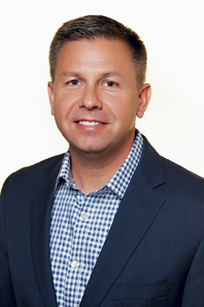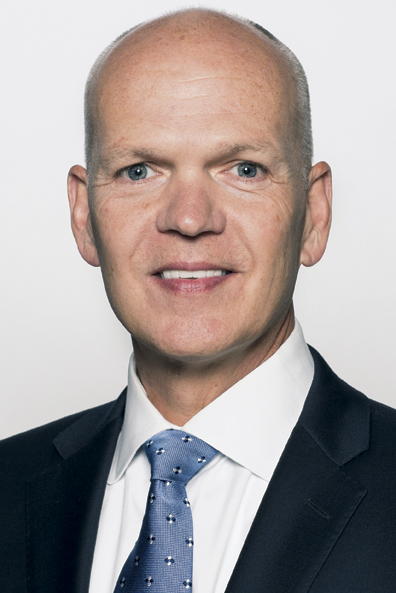PROVIDING ADVICE WITHIN A CONTRIBUTION PLAN
OneAmerica taps extra data to help employees reach retirement goals
By Thomas A. McCoy, CLU
The goal of achieving retirement readiness for a workforce is sometimes pulled in different directions by two equally valuable resources: technology and human advice. Effective use of both is critical, but it is possible to mix the two in different quantities to produce the desired result.
Defined contribution (DC) plans using target date funds as the default investment for contributions are employing a technology-driven approach to retirement planning that relieves employees of having to make investment decisions. The target date funds gradually lessen an employee’s exposure to stocks and increase fixed income investments as the individual’s retirement date nears—a generally prudent investment strategy.
Target date funds depend on predetermined investment formulas and can provide automatic contribution increases to employees’ accounts, annually or when they receive a pay increase. Participants need provide only one piece of data—their expected retirement date—and they’re done. This simplified, streamlined approach has gained advocates in the last few years.
There is another way that DC plan participants can avoid having to make their own investment decisions, one that is driven more by human advice. They could offload those decisions to a professional. This approach calls for the plan provider to gather more data on individual plan participants. The goal is to create a retirement income stream that is more tailored to individual financial circumstances.

—Terry Burns
Assistant Vice President, Products and Investments
OneAmerica Retirement Services
OneAmerica, which services approximately 12,000 retirement plans nationally, recently announced a collaborative venture with Russell Investments, to provide its retirement plan participants with the option of having their plan assets professionally managed. Russell, which manages $261 billion of assets in 31 countries, will serve as OneAmerica’s outsourced investment manager.
“We’ve recognized for a long time that plan participants need help in managing their retirement assets. Sometimes they admit it, and sometimes they don’t,” says Terry Burns, assistant vice president of products and investments in OneAmerica’s Retirement Services division.
“Our experience has been that it doesn’t matter if the employer is small or large, blue collar or white collar, tech company or manufacturer, even an accounting firm or an investment advisory firm—the plan participants need help. It also doesn’t matter if they have a small balance or a large one.”
Russell Investments will provide analysis and investment advice for a fee to the OneAmerica plan participants who choose to use the service, known as a Personalized Retirement Account (PRA). The services it provides will be based on far more data than just their projected retirement date.
The PRA can take into consideration not only the assets that are part of the participant’s DC retirement plan, but also the individual’s relevant financial data that is outside of his or her plan. Each participant’s customized asset allocation is assessed quarterly and adjusted as needed based on progress toward his or her retirement income goals.
“Based on the retirement income the individual is aiming for, the PRA performs an analysis of the gaps that need to be filled and recommends an appropriate strategy to achieve the desired result,” Burns says.
It can be set up as the default investment choice for participants in OneAmerica’s DC plans, or it can be listed as an option so that they would have to opt into it. “We think it is best used as a default because we think that’s a better solution than the typical target date funds approach,” Burns says.
OneAmerica services both 401(k) and 403(b) accounts. More than half of its new retirement business last year was written for tax-exempt employers. “We think the PRA will be an effective solution for both nonprofit and for-profit organizations,” says Burns. “Our goal is to improve participants’ retirement outcomes by helping them invest and provide them a clear picture of how they are tracking to meet their retirement goals.”

—Jay Breitenkamp
Business Development Director, Defined Contribution
Advisor and Intermediate Solutions
Russell Investments
Jay Breitenkamp, business development director of defined contribution, advisor and intermediate solutions for Russell Investments, says, “Employers are recognizing that employees are unlikely to be on a direct path to their retirement goal. What PRA does is analyze where employees are on that path and adapts to their unique circumstances and their market experience.” Plan participants using the PRA may choose how much personal financial data they wish to provide to Russell.
“A lot of data used to provide recommendations can come from what is already embedded in the plan’s record-keeping system,” he explains. “That information would include age, salary, savings rate, gender, geographic location and account balance. Then there’s a lot of detail behind each of these, such as whether the deferral balance is in a Roth or otherwise.”
A holistic approach
Those who choose to provide additional data that is outside of the plan’s recordkeeping system can get a more complete snapshot of where they are on the path to retirement. To illustrate how the PRA can use additional personal data from a plan participant to further tailor the recommendations, Breitenkamp uses himself as an example.
“You could call me a mid-career employee. I worked for another employer for 20-plus years. I rolled my retirement account into a PRA with the Russell Investments retirement plan. I also have investments in a direct account with another mutual fund company, some additional assets through a financial advisor, as well as a little bit of farmland that generates some income. Those are all the kinds of investments that can be entered into the PRA, and it allows Russell to provide me with a more precise asset allocation.
“This helps me look more holistically at my retirement plan. It also helps me compare notes and be more educated when I talk to my outside financial advisor.”
He explains that plan participants can either enter this kind of data manually or “if the participant provides his or her credentials, we can go out in a very secure manner and obtain that data for the individual.
“The PRA approach is a great way for financial advisors to change the conversation from funds, fees and fiduciary to retirement readiness,” adds Breitenkamp. “We as an industry need to shift the mindset of plan participants, plan sponsors and even—in some cases—advisors from thinking about the DC plan not as simply accumulating assets. It’s really about retirement income.
“We recently talked to a group of HR people at a large manufacturing company in the Midwest who said a number of their senior people were eligible for retirement but they weren’t sure they were financially capable of retiring. The PRA can help those individuals become comfortable with being ready to retire. That, in turn, gives other workers an opportunity to be promoted.”
OneAmerica’s offering of the PRA is consistent with industry research showing that workers of all ages want to receive financial advice through their employer. The financial crisis of a decade ago may have initially sowed the seeds for this trend.
According to MetLife’s recently published Employee Benefit Trends Study, the number one source of stress for employees of all ages is financial stress. The study further shows that of the top five sources of financial stress, three of them (including the top two) relate to retirement concerns.
Employers should be getting the message that employees’ financial concerns about retirement do not start when they retire. When employees take an active role in determining their retirement income goals while they are still working—and can be shown how those goals can be reached—both the employer and employee are winners.
OneAmerica’s offering of the Personalized Retirement Account is one example of how this can be accomplished.
For more information:
OneAmerica Retirement Services
www.oaretirement.com
Russell Investments
www.russellinvestments.com
The author
Thomas A. McCoy, CLU, is an Indiana-based freelance insurance writer.






